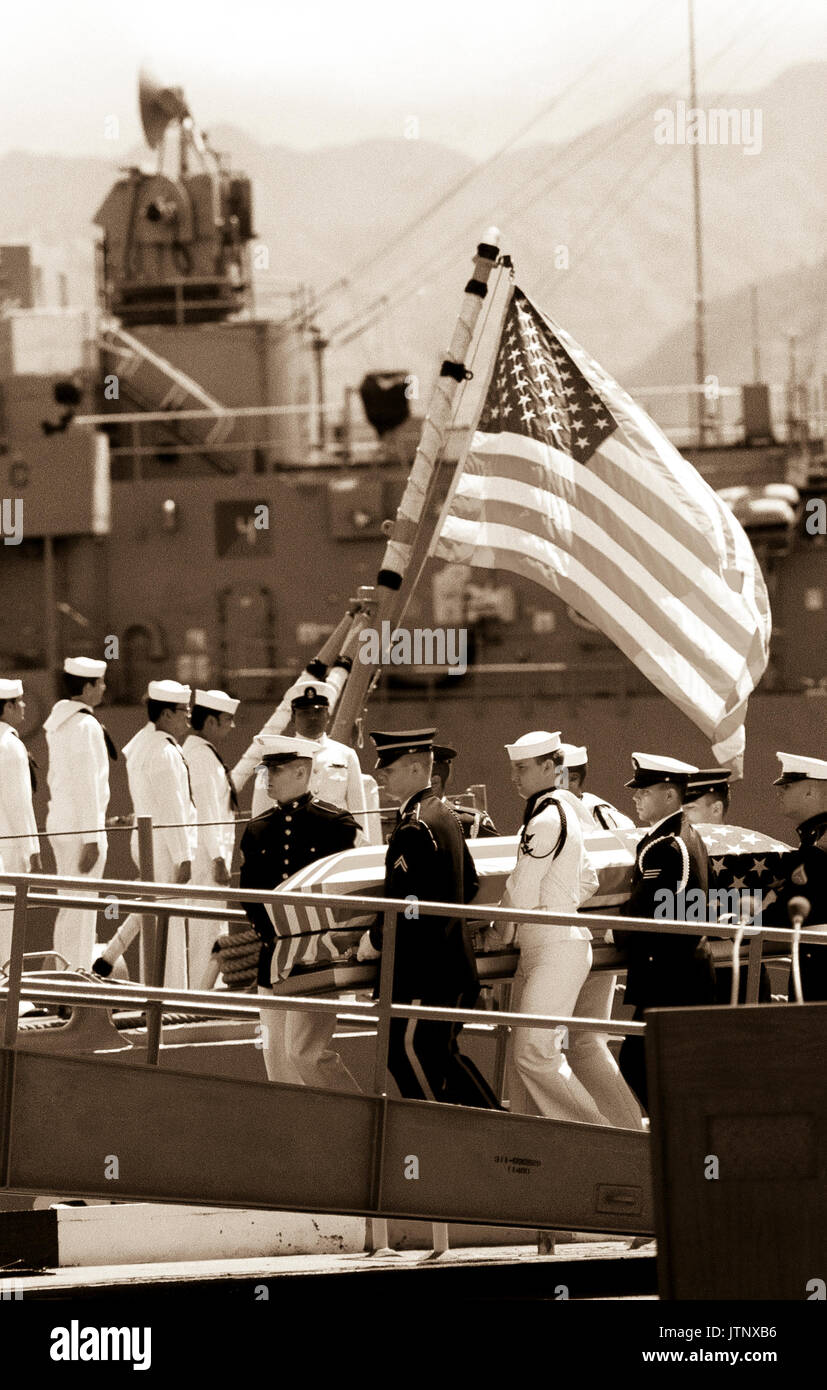A joint services casket team carries the flag-draped casket of the Unknown Serviceman of the Vietnam Era toward the frigate USS BREWTON (FF 1086), at the conclusion of a wreath-laying ceremony. The casket will be transported to California and then transferred to Arlington National Cemetery for interment at the Tomb of the Unknowns.

Image details
Contributor:
American Photo Archive / Alamy Stock PhotoImage ID:
JTNXB6File size:
16.6 MB (819.5 KB Compressed download)Releases:
Model - no | Property - noDo I need a release?Dimensions:
1920 x 3018 px | 16.3 x 25.6 cm | 6.4 x 10.1 inches | 300dpiDate taken:
17 May 1984Location:
VietnamMore information:
This image could have imperfections as it’s either historical or reportage.
The Vietnam War (Vietnamese: Chiến tranh Việt Nam), also known as the Second Indochina War, [56] and known in Vietnam as the Resistance War Against America (Vietnamese: Kháng chiến chống Mỹ) or simply the American War, was a war that occurred in Vietnam, Laos, and Cambodia from 1 November 1955[A 1] to the fall of Saigon on 30 April 1975. It was the second of the Indochina Wars and was officially fought between North Vietnam and the government of South Vietnam. The North Vietnamese army was supported by the Soviet Union, China and other communist allies and the South Vietnamese army was supported by the United States, South Korea, Australia, Thailand and other anti-communist allies.[57] The war is therefore considered a Cold War-era proxy war.[58] The Viet Cong (also known as the National Liberation Front, or NLF), a South Vietnamese communist common front aided by the North, fought a guerrilla war against anti-communist forces in the region, while the People's Army of Vietnam, also known as the North Vietnamese Army (NVA), engaged in more conventional warfare, at times committing large units to battle. As the war continued, the military actions of the Viet Cong decreased as the role and engagement of the NVA grew. U.S. and South Vietnamese forces relied on air superiority and overwhelming firepower to conduct search and destroy operations, involving ground forces, artillery, and airstrikes. In the course of the war, the U.S. conducted a large-scale strategic bombing campaign against North Vietnam. The North Vietnamese government and the Viet Cong were fighting to reunify Vietnam. They viewed the conflict as a colonial war and a continuation of the First Indochina War against forces from France and later on the United States. The U.S. government viewed its involvement in the war as a way to prevent a communist takeover of South Vietnam. This was part of the domino theory of a wider containment policy, with the stated aim of stopping the spread of communism worldwide